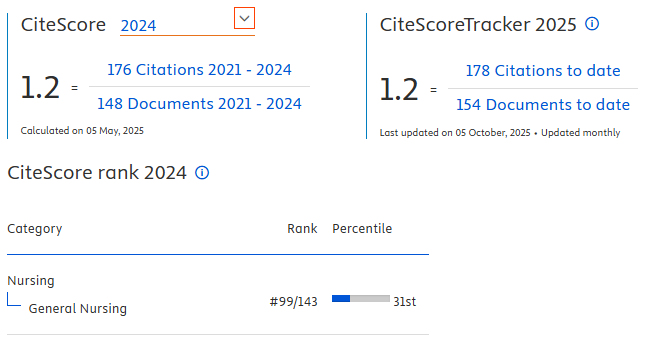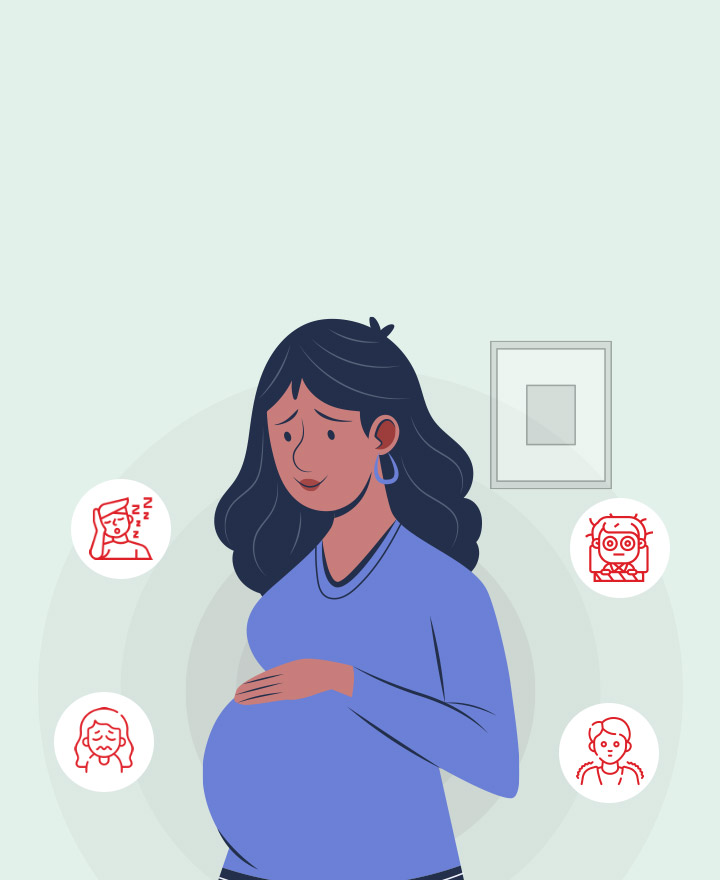Factors associated with blood pressure and nutritional status among adolescents: a cross-sectional study
Downloads
Introduction: The association between obesity and hypertension in adolescents necessitates the identification of potential predictors at an early stage. This study aimed to examine the association of sex and place of residence with nutritional status and blood pressure in adolescents aged 10-18 years.
Methods: A sample of 198 subjects aged 10-18 years was included in this study. Data on demographic characteristics were collected using a structured questionnaire, whereas nutritional status and blood pressure were measured using standardized measures. Statistical analyses, including the independent t-test, Pearson and Spearman correlation test, and linear regression, were conducted to identify potential risk factors, with statistical significance set at p < 0.05.
Results: The study revealed a high prevalence of overweight-obesity (24.7%) and hypertension (11.1%) among the subjects. Significant correlations were observed between body weight, height, age, and blood pressure (p < 0.05). Boys exhibited higher mean body height and Systolic Blood Pressure (SBP) than girls. Nutritional status was positively associated with Body Mass Index (BMI) and blood pressure, with nutritional status emerging as the primary predictor in both private houses and boarding schools (p < 0.05). Furthermore, age at menarche was found to be a predictor of blood pressure in boys, whereas age was a predictor in girls.
Conclusions: BMI predicts nutritional status and blood pressure, whereas age and menarche age are crucial factors that depend on sex. Based on these findings, it is critical to manage obesity and hypertension by considering characteristics such as nutritional status, sex, and age
Akseer, N. et al. (2020) ‘Non-communicable diseases among adolescents: current status, determinants, interventions and policies’, BMC Public Health, 20(1), pp. 1–20. doi: 10.1186/s12889-020-09988-5.
Asrullah, M. et al. (2022) ‘Trend in age at menarche and its association with body weight, body mass index and non-communicable disease prevalence in Indonesia: evidence from the Indonesian Family Life Survey (IFLS)’, BMC Public Health, 22(1), pp. 1–10. doi: 10.1186/s12889-022-12995-3.
Astutik, E. et al. (2021) ‘Differences risk factors for hypertension among elderly woman in rural and urban Indonesia’, Yale Journal of Biology and Medicine, 94(3), pp. 407–415.
Benbaibeche, H., Bounihi, A. and Koceir, E. A. (2021) ‘Leptin level as a biomarker of uncontrolled eating in obesity and overweight’, Irish Journal of Medical Science, 190(1), pp. 155–161. doi: 10.1007/s11845-020-02316-1.
Best, O. and Ban, S. (2021) ‘Adolescence: Physical Changes and Neurological Development’, British Journal of Nursing, 30(5), pp. 272–275. doi: https://doi.org/10.12968/bjon.2021.30.5.272.
Bolajoko, O. et al. (2014) ‘Nutrient adequacy of foods eaten by students attending boarding and day secondary schools in Owo’, Current Research in Nutrition and Food Science, 2(2), pp. 84–87. doi: 10.12944/CRNFSJ.2.2.04.
CDC (2018) Behavior, environment, and genetic factors all have a role in causing people to be overweight and obese, Genomics & Precision Health.
Chin, Y. S., Woon, F. C. and Chan, Y. M. (2022) ‘The impact of Movement Control Order during the COVID-19 pandemic on lifestyle behaviours and body weight changes: Findings from the MyNutriLifeCOVID-19 online survey’, PLoS ONE, 17(1), pp. 1–16. doi: 10.1371/journal.pone.0262332.
Choi, J. et al. (2021) ‘Gender and age differences in the prevalence and associated factors of metabolic syndrome among children and adolescents in South Korea’, Child Health Nurs Res, 27(2), pp. 160–170. doi: https://doi.org/10.4094/chnr.2021.27.2.160 CHNR.
Cossio-Bolaños, M. A. et al. (2021) ‘Estimation of Pubertal Growth Spurt Parameters in Children and Adolescents Living at Moderate Altitude in Colombia’, Frontiers in Endocrinology, 12(718292), pp. 1–6. doi: 10.3389/fendo.2021.718292.
Devonshire, A. L. et al. (2016) ‘Elevated blood pressure in adolescent girls: Correlation to body size and composition’, BMC Public Health, 16(1), pp. 1–7. doi: 10.1186/s12889-016-2717-6.
Dick, B. and Ferguson, B. J. (2015) ‘Health for the World’s Adolescents: A Second Chance in the Second Decade’, Journal of Adolescent Health, 56(1), pp. 3–6. doi: 10.1016/j.jadohealth.2014.10.260.
Farapti, F. et al. (2019) ‘Highlighting of urinary sodium and potassium among Indonesian schoolchildren aged 9-12 years: The contribution of school food’, Journal of Nutrition and Metabolism, 2019(1028672), pp. 1–9. doi: 10.1155/2019/1028672.
Flynn, J. T. et al. (2017) ‘Clinical Practice Guideline for Screening and Management of High Blood Pressure in Children and Adolescents’, Pediatrics, 140(3), pp. 1–73. doi: 10.1542/peds.2017-1904.
Furqonia, A. W., Farapti, F. and Notobroto, H. B. (2023) ‘Is Excess Sodium Intake a Risk Factor for Overweight?: A Systematic Review’, Amerta Nutrition, 7(3), pp. 459–467. doi: 10.20473/amnt.v7i3.2023.459-467.
Galescu, O. et al. (2012) ‘Blood Pressure over Height Ratios: Simple and Accurate Method of Detecting Elevated Blood Pressure in Children’, International Journal of Pediatrics, 2012, pp. 1–4. doi: 10.1155/2012/253497.
He, Y. et al. (2022) ‘Influences of the COVID-19 Pandemic on Obesity and Weight-Related Behaviors among Chinese Children: A Multi-Center Longitudinal Study’, Nutrients, 14(18), pp. 1–11. doi: https://doi.org/10.3390/nu14183744.
Indonesian Ministry of Health (2020) Peraturan Menteri Kesehatan Republik Indonesia Nomor 2 Tahun 2020 Tentang Standar Antropometri Anak.
Indriasari, R. et al. (2020) ‘Alarming nutrition problems among adolescent students attending islamic boarding school in Indonesia’, Enfermeria Clinica, 30(S4), pp. 44–47. doi: 10.1016/j.enfcli.2019.10.037.
Institute of Medicine and National Research Council (2015) ‘Measuring the Risks and Causes of Premature Death: Summary of Workshops’, in Measuring the Risks and Causes of Premature Death. Washington, D.C: The National Academies Press. doi: 10.17226/21656.
Johnson, W. et al. (2020) ‘Differences in the relationship of weight to height, and thus the meaning of BMI, according to age, sex, and birth year cohort’, Annals of Human Biology, 47(2), pp. 199–207. doi: 10.1080/03014460.2020.1737731.
Kandinasti, S. and Farapti, F. (2019) ‘The Different Intake of Energy and Macronutrient on Weekdays and Weekend among Adolescent in Urban City’, Indian Journal of Public Health Research & Development, 10(3), pp. 401–406. doi: 10.5958/0976-5506.2019.00527.8.
Kim, N. H., Lee, J. M. and Yoo, E. (2022) ‘How the COVID-19 Pandemic Has Changed Adolescent Health: Physical Activity, Sleep, Obesity, and Mental Health’, International Journal of Environmental Research and Public Health, 19(15), pp. 1–12. doi: 10.3390/ijerph19159224.
Kobylińska, M. et al. (2022) ‘Body Composition and Anthropometric Indicators in Children and Adolescents 6–15 Years Old’, International Journal of Environmental Research and Public Health, 19(18), pp. 1–11. doi: 10.3390/ijerph191811591.
Kurane, A. B. et al. (2015) ‘Study of blood pressure to height ratio and its relation with standard BP percentile charts to detect the prehypertension in age group 12 to 15 yrs’, Pediatric Review: International Journal of Pediatric Research, 2(4), pp. 120–124. doi: 10.17511/ijpr.2015.i04.15.
Kurnianto, A. et al. (2020) ‘Prevalence of Hypertension and Its Associated Factors among Indonesian Adolescents’, International Journal of Hypertension, 2020(4262034), pp. 1–7. doi: 10.1155/2020/4262034.
Li, Y. et al. (2021) ‘Association between pubertal development and elevated blood pressure in children’, Journal of Clinical Hypertension, 23(8), pp. 1498–1505. doi: 10.1111/jch.14315.
Mameli, C. et al. (2018) ‘The association between a body shape index and cardiovascular risk in overweight and obese children and adolescents’, PLoS ONE, 13(1), pp. 1–12. doi: 10.1371/journal.pone.0190426.
O’Neill, K. N. et al. (2022) ‘Puberty Timing and Sex-Specific Trajectories of Systolic Blood Pressure: A Prospective Cohort Study’, Hypertension, 79(8), pp. 1755–1764. doi: 10.1161/HYPERTENSIONAHA.121.18531.
Olugbemi, T. B. et al. (2019) ‘Nutritional status of day and boarding students attending school for special needs in North-central Nigeria’, Research Journal of Health Sciences, 7(1), pp. 19–27.
Pardede, S. O. and Setyanto, D. B. (2017) ‘Prevalence and Factors that Influence Hypertension in Adolescents in Central Jakarta’, American Journal of Clinical Medicine Research, 5(4), pp. 43–48. doi: 10.12691/ajcmr-5-4-1.
Park, S. J. and Shin, J. Il (2021) ‘Comparative Analysis of American Academy of Pediatrics and European Society of Hypertension Guidelines for the Diagnosis and Treatment of Pediatric Hypertension’, Childhood Kidney Diseases, 25(2), pp. 71–77. doi: 10.3339/jkspn.2021.25.2.71.
Poh, B. K. et al. (2022) ‘Anthropometric indices, but not birth weight, are associated with high blood pressure risk among Malay adolescents in Kuala Lumpur’, Dialogues in Health, 1(100006), pp. 1–7. doi: 10.1016/j.dialog.2022.100006.
Rahmawati, N. T. and Hastuti, J. (2021) ‘Secular change in body size and somatotype of Indonesian children aged 7–15 years (1999–2019)’, Open Access Macedonian Journal of Medical Sciences, 9(E), pp. 419–427. doi: 10.3889/oamjms.2021.6154.
Rimbawan, R. et al. (2023) ‘School Lunch Programs and Nutritional Education Improve Knowledge, Attitudes, and Practices and Reduce the Prevalence of Anemia: A Pre-Post Intervention Study in an Indonesian Islamic Boarding School’, Nutrients, 15(4), pp. 1–15. doi: 10.3390/nu15041055.
Rodriguez-Martinez, A. et al. (2020) ‘Height and body-mass index trajectories of school-aged children and adolescents from 1985 to 2019 in 200 countries and territories: a pooled analysis of 2181 population-based studies with 65 million participants’, The Lancet, 396(10261), pp. 1511–1524. doi: 10.1016/S0140-6736(20)31859-6.
Simmonds, M. et al. (2016) ‘Predicting adult obesity from childhood obesity: a systematic review and meta-analysis’, Obesity Reviews, 17(2), pp. 95–107. doi: 10.1111/obr.12334.
Słowik, J. et al. (2019) ‘Nutritional Status Assessment in Children and Adolescents with Various Levels of Physical Activity in Aspect of Obesity’, Obesity Facts, 12(5), pp. 554–563. doi: 10.1159/000502698.
Song, Y. H. (2014) ‘The association of blood pressure with body mass index and waist circumference in normal weight and overweight adolescents’, Korean Journal of Pediatrics, 57(2), pp. 79–84. doi: 10.3345/kjp.2014.57.2.79.
Sunday Ekanah, K. (2017) ‘Nutritional Status of Day and Boarding Female Adolescent Secondary School Students in Warri South Local Government Area of Delta State’, Journal of Food and Nutrition Sciences, 5(3), p. 131. doi: 10.11648/j.jfns.20170503.20.
Syah, M. N. H. et al. (2020) ‘HYPERTENSION AND RELATED FACTORS AMONG FEMALE STUDENTS AT VOCATIONAL HIGH SCHOOL BEKASI, INDONESIA’, Media Gizi Indonesia (National Nutrition Journal), 15(3), pp. 219–224. doi: https://doi.org/10.204736/mgi.v15i3. 219–224.
Syifadhiya, Q. and Farapti, F. (2023) ‘Association between Salty Taste Threshold and Hypertension among Adolescents in Surabaya’, Amerta Nutrition, 7(4), pp. 487–493. doi: 10.20473/amnt.v7i4.2023.487-493.
Tjahjono, C. et al. (2023) ‘Hypertension incidence among students at an Islamic boarding school in Malang Regency: A cross sectional study’, in AIP Conference Proceedings, p. 20077. doi: 10.1063/5.0111272.
Tjahjono, C. T. et al. (2021) ‘Cardiovascular Disease Among Adolescence in Smpn 5 Malang: a Cross-Sectional Survey Study’, Journal of Community Health and Preventive Medicine, 1(1), pp. 30–36. doi: 10.21776/ub.jochapm.2021.001.01.5.
Tsutsui, T. et al. (2022) ‘Growth until Peak Height Velocity Occurs Rapidly in Early Maturing Adolescent Boys’, Children, 9(10), pp. 1–7. doi: 10.3390/children9101570.
UNICEF (2022) Indonesia: Overweight and obesity on the rise in all age and income groups, UNICEF.
Wang, A. et al. (2016) ‘To Board or Not to Board: Evidence from Nutrition, Health and Education Outcomes of Students in Rural China’, China and World Economy, 24(3), pp. 52–66. doi: 10.1111/cwe.12158.
WHO (2022) Adolescent and Young Adult Health, World Health Organization.
Xu, H. et al. (2011) ‘The association of Hypertension with Obesity and Metabolic Abnormalities among Chinese Children’, International Journal of Hypertension, 2011(987159), pp. 1–6. doi: 10.4061/2011/987159.
Yang, Y. et al. (2021) ‘Prevalence trends of hypertension among 9–17 aged children and adolescents in Yunnan, 2017–2019: a serial cross-sectional surveillance survey’, BMC Public Health, 21(1), pp. 1–9. doi: 10.1186/s12889-021-10258-1.
Yusni, Y. and Meutia, F. (2019) ‘Anthropometry analysis of nutritional indicators in Indonesian adolescents’, Journal of Taibah University Medical Sciences, 14(5), pp. 460–465. doi: 10.1016/j.jtumed.2019.07.001.
Zadka, K., Pałkowska-Goździk, E. and Rosołowska-Huszcz, D. (2019) ‘Relation between environmental factors and children’s health behaviors contributing to the occurrence of diet-related diseases in central Poland’, International Journal of Environmental Research and Public Health, 16(1), pp. 1–14. doi: 10.3390/ijerph16010052.
Zhao, W., Mo, L. and Pang, Y. (2021) ‘Hypertension in adolescents: The role of obesity and family history’, Journal of Clinical Hypertension, 23(12), pp. 2065–2070. doi: 10.1111/jch.14381.
Copyright (c) 2024 Jurnal Ners

This work is licensed under a Creative Commons Attribution 4.0 International License.
Authors who publish with Jurnal Ners agree to the following terms:
- Authors transfer the Copyright and grant Jurnal Ners the right of first publication with the work simultaneously licensed under a Creative Commons Attribution 4.0 International License that allows others to remix, adapt and build upon the work with an acknowledgment of the work's authorship and of the initial publication in Jurnal Ners.
- Authors are permitted to copy and redistribute the journal's published version of the work (e.g., post it to an institutional repository or publish it in a book), with an acknowledgment of its initial publication in Jurnal Ners.
Jurnal Ners requires a formal written declaration and transfer of copyright from the author(s) for each article published. We, therefore, ask you to complete and return this form, retaining a copy for your own records. Your cooperation is essential and appreciated. Any delay will result in a delay in publication. The form can be downloaded HERE.
































